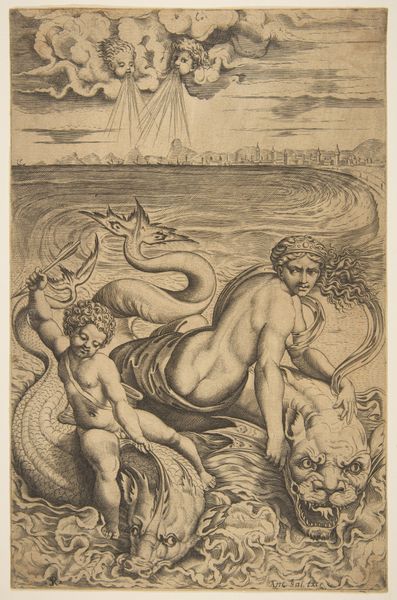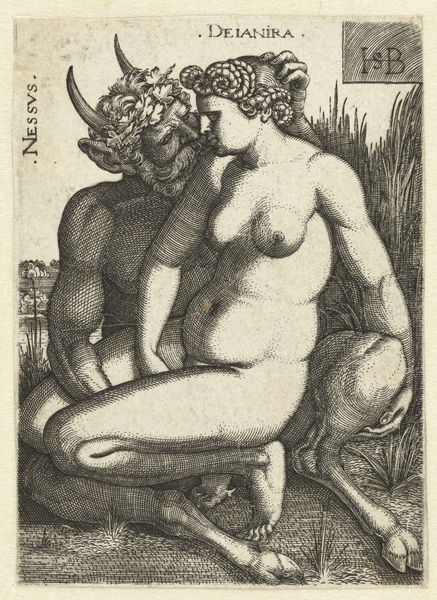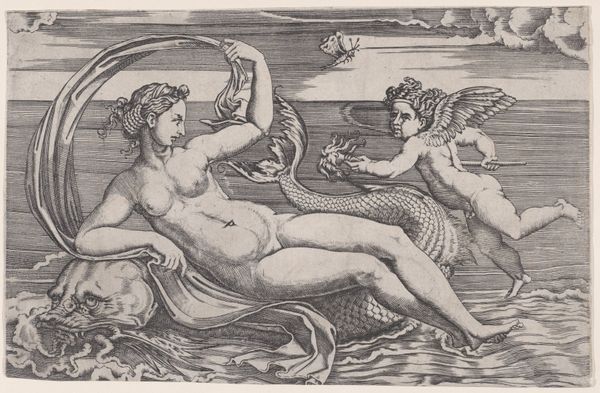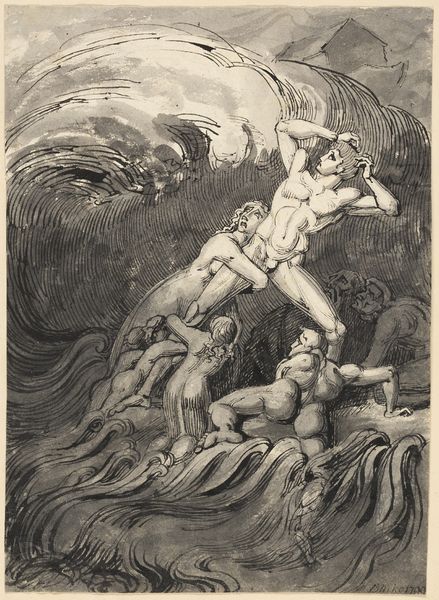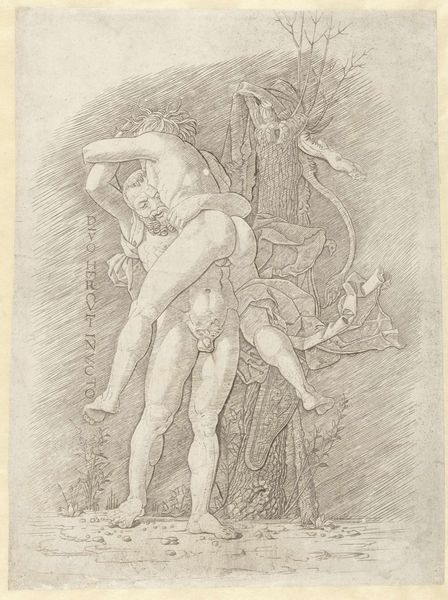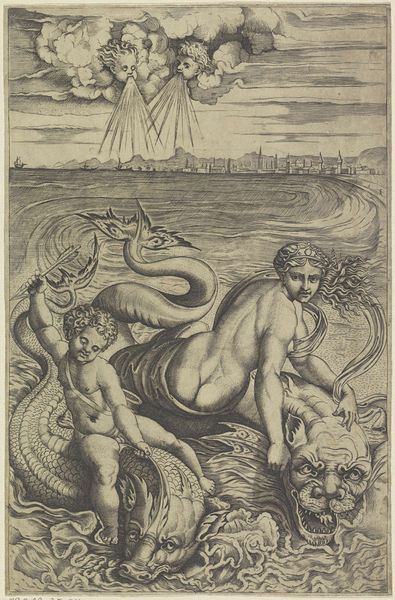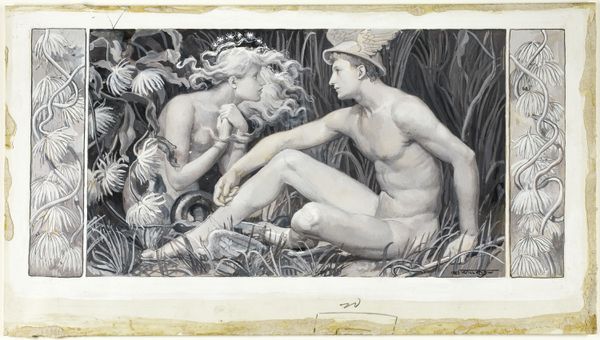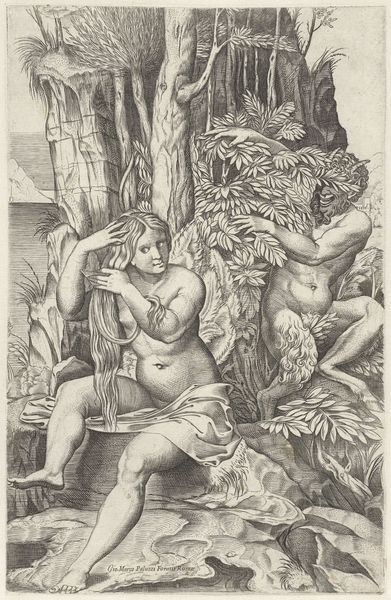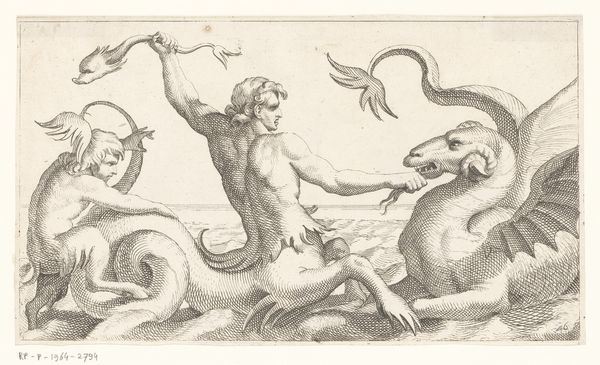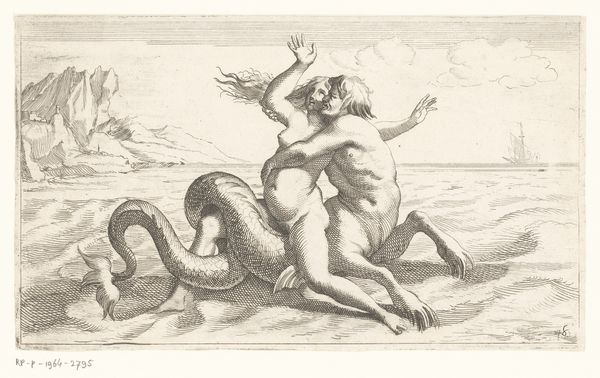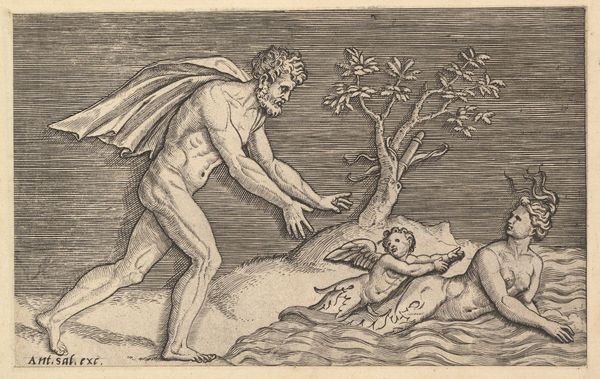
Speculum Romanae Magnificentiae: A Triton Carrying off a Nymph 1515 - 1527
0:00
0:00
drawing, print, intaglio, engraving
#
drawing
#
allegory
#
pen drawing
# print
#
pen illustration
#
pen sketch
#
intaglio
#
figuration
#
form
#
11_renaissance
#
line
#
italian-renaissance
#
nude
#
engraving
Dimensions: sheet: 4 1/2 x 6 7/8 in. (11.4 x 17.4 cm) trimmed to platemark mount: 17 5/16 x 10 5/8 in. (44 x 27 cm)
Copyright: Public Domain
Curator: This intaglio print, dating from around 1515 to 1527, is titled *Speculum Romanae Magnificentiae: A Triton Carrying off a Nymph*. It's the work of Marco Dente. Editor: It's immediately striking – the stark contrast achieved with dense, meticulous lines. There's a real tension created by the figures' contorted pose. Curator: Exactly. Consider the political implications of the rape and abduction. These acts of aggression were used as metaphors during the Roman Renaissance period to describe foreign invaders pillaging their newly founded city. And there is also the depiction of the nude nymph. Renaissance audiences considered it to be about power and control through domination, gender dynamics, and societal hierarchies. Editor: While I see the reading you propose, focusing on the composition itself, the interlocking bodies form a dynamic pyramidal shape, creating an energy that almost eclipses the disturbing narrative. The undulating lines mimic the movement of water, enhancing the drama. And look at the details of the sea, the reeds on the right corner are beautifully rendered. Curator: True, but it is critical that we examine how ancient Roman visual culture—specifically this focus on abduction—was later weaponized in centuries of imperialism, especially around controlling women’s bodies and broader social narratives. Editor: Point taken. Although I appreciate the linear elegance and the formal achievements, understanding the symbolic content through a feminist reading allows one to fully examine these problematic issues you mention that we still confront in modern culture. It prompts us to consider our current societal biases, doesn't it? Curator: It certainly does. And that’s why contextualizing the art of the past matters now more than ever. Editor: Indeed. It reminds us that engaging with form alone is insufficient; one must always consider its socio-historical ripples.
Comments
No comments
Be the first to comment and join the conversation on the ultimate creative platform.
